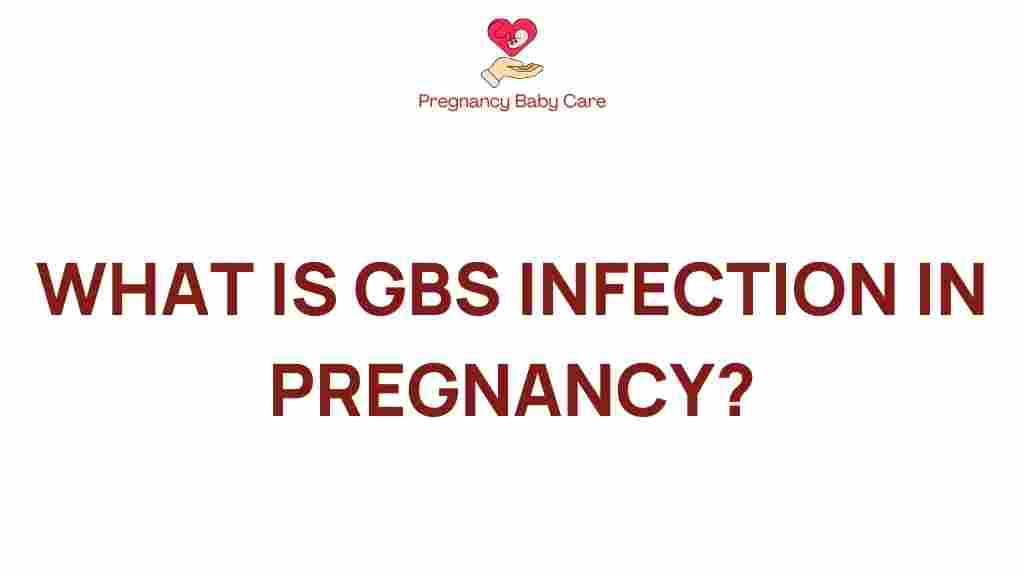Understanding GBS Infection in Pregnancy: What Every Expecting Mother Should Know
Group B Streptococcus (GBS) infection is a significant concern for expecting mothers and their newborns. As part of maternal health, understanding GBS infection, its risks, prevention, and treatment options is crucial for a healthy pregnancy. In this article, we will delve into the essentials of GBS infection, what it means for pregnancy, its potential risks for newborns, and the steps that can be taken to prevent and manage this condition.
What is GBS Infection?
Group B Streptococcus (GBS) is a type of bacteria commonly found in the intestines and the lower genital tract of healthy adults. While it is usually harmless in adults, GBS can pose serious risks during pregnancy and for newborns. It is important for expecting mothers to be aware of GBS infection and its implications.
How Common is GBS Infection in Pregnancy?
About 10-30% of pregnant women carry GBS in their vagina or rectum. Most women do not experience any symptoms or complications, but GBS can be transmitted to the baby during delivery, which can lead to serious health issues.
Risks Associated with GBS Infection in Pregnancy
While many women carry GBS without any issues, GBS infection can have serious consequences for maternal health and newborn risks. The primary risks include:
- Infection During Labor: If GBS is present during labor, there is a risk of transmission to the newborn.
- Neonatal GBS Disease: This can manifest as early-onset (within the first week of life) or late-onset (up to three months old) infections, leading to sepsis, pneumonia, or meningitis.
- Maternal Complications: Although rare, GBS can cause urinary tract infections and other complications in pregnant women.
Symptoms of GBS Infection
Most women with GBS do not exhibit symptoms. However, when symptoms do appear, they can include:
- Fever during labor
- Chills and rigors
- Increased heart rate
- Pelvic pain
It is crucial for pregnant women to monitor their health and report any unusual symptoms to their healthcare provider.
Screening for GBS Infection
Screening for GBS infection is typically performed between 35 and 37 weeks of pregnancy. The screening process involves:
- Vaginal and Rectal Swabs: A healthcare provider will take samples from the vagina and rectum to test for the presence of GBS.
- Lab Testing: The samples are sent to a lab for analysis to determine if GBS is present.
Based on the results, your healthcare provider will discuss the appropriate steps to take for your labor and delivery.
Prevention of GBS Infection
While it may not be possible to prevent GBS colonization entirely, there are measures that can help reduce the risks associated with GBS infection:
- Screening: Regular screening during pregnancy can help identify GBS carriers.
- Antibiotic Prophylaxis: If a woman tests positive for GBS, intravenous antibiotics during labor can significantly reduce the risk of transmission to the newborn.
- Awareness: Understanding the risks and symptoms associated with GBS infection can empower expecting mothers to seek timely care.
Treatment Options for GBS Infection
If a pregnant woman tests positive for GBS, her healthcare provider will likely recommend treatment options to manage the infection and minimize risks:
- Intravenous Antibiotics: Administered during labor to prevent transmission to the baby.
- Monitoring: Close monitoring of the newborn after delivery for any signs of GBS infection.
- Postpartum Care: Follow-up care for the mother to ensure her health and recovery.
Step-by-Step Process for Managing GBS Infection
For mothers diagnosed with GBS, following a structured approach can help ensure the best outcomes:
- Consult Your Healthcare Provider: Discuss your GBS status and any concerns.
- Plan for Labor: Ensure your birth plan accounts for GBS treatment, including the use of antibiotics.
- Inform Your Birth Team: Make sure your healthcare team is aware of your GBS status as you enter labor.
- Monitor Your Newborn: After delivery, keep an eye out for any signs of infection in your baby, such as difficulty breathing, fever, or lethargy.
Newborn Risks Associated with GBS Infection
Newborns are particularly vulnerable to GBS infection. The risks include:
- Early-Onset Disease: Occurs within the first week after birth, often presenting as respiratory distress, lethargy, and feeding difficulties.
- Late-Onset Disease: Can occur between one week and three months after birth, possibly leading to meningitis or sepsis.
- Long-Term Complications: Some babies may suffer long-term issues, including developmental delays or hearing loss.
What to Do If Your Newborn Shows Symptoms
If you notice any of the following symptoms in your newborn, contact your pediatrician immediately:
- Difficulty breathing
- Fever
- Unusual irritability or lethargy
- Feeding difficulties
Troubleshooting Tips for Expecting Mothers
Here are some troubleshooting tips for expecting mothers concerning GBS infection:
- Stay Informed: Regularly educate yourself about GBS infection and its implications for your pregnancy.
- Maintain Open Communication: Keep an open dialogue with your healthcare provider about any concerns or symptoms you experience.
- Follow Medical Advice: Adhere to screening and treatment recommendations to ensure the best outcomes for you and your baby.
Conclusion
Understanding GBS infection in pregnancy is vital for the health of both the mother and the newborn. By being informed about GBS, recognizing symptoms, participating in screening, and adhering to treatment protocols, expecting mothers can significantly reduce the risks associated with GBS infection. Always consult your healthcare provider with any concerns or questions regarding your health and pregnancy.
For more information on maternal health and pregnancy-related issues, visit CDC Group B Strep Information.
Additionally, for support and resources, consider checking out our maternal health support page.
This article is in the category Pregnancy and created by PregnancyBabyCare Team
